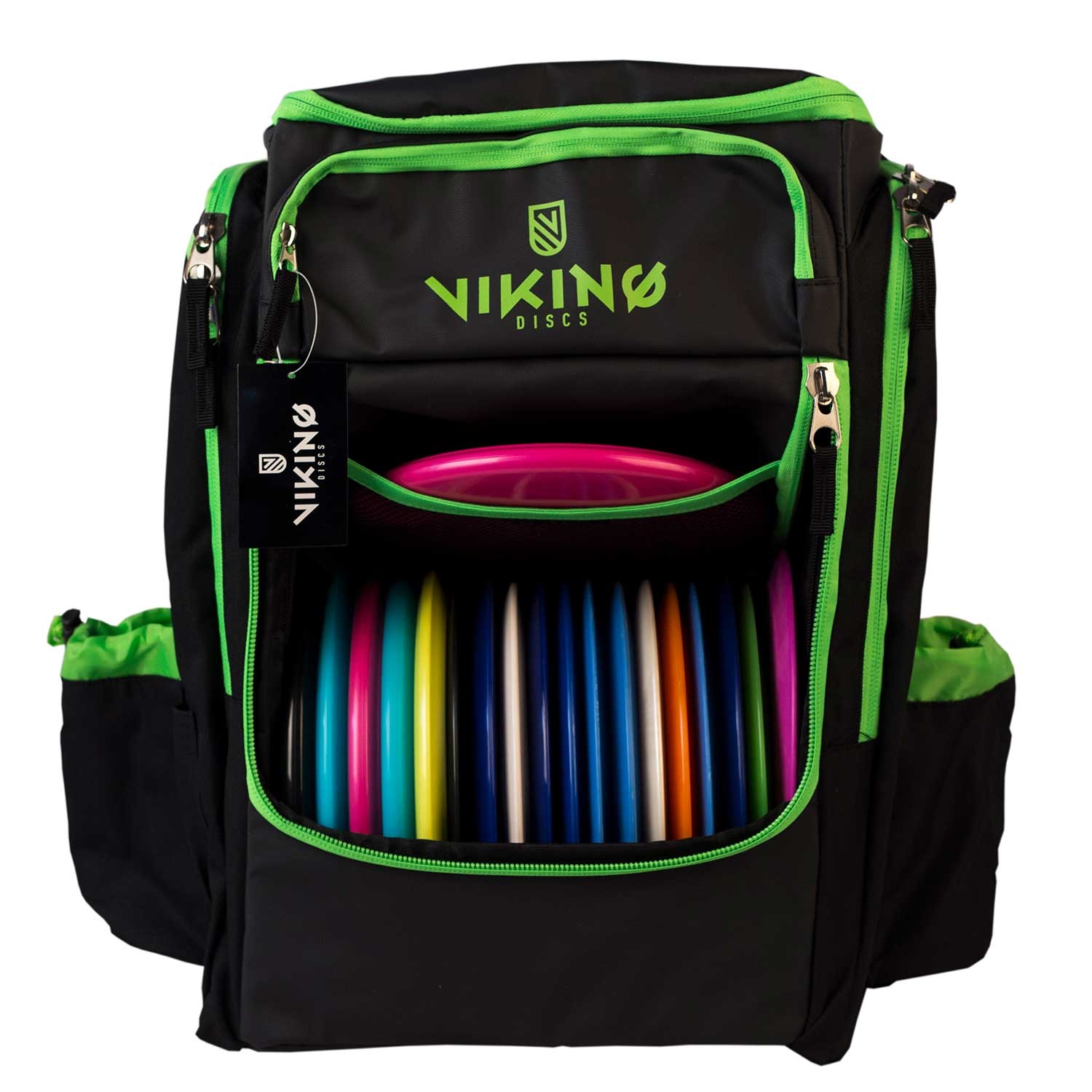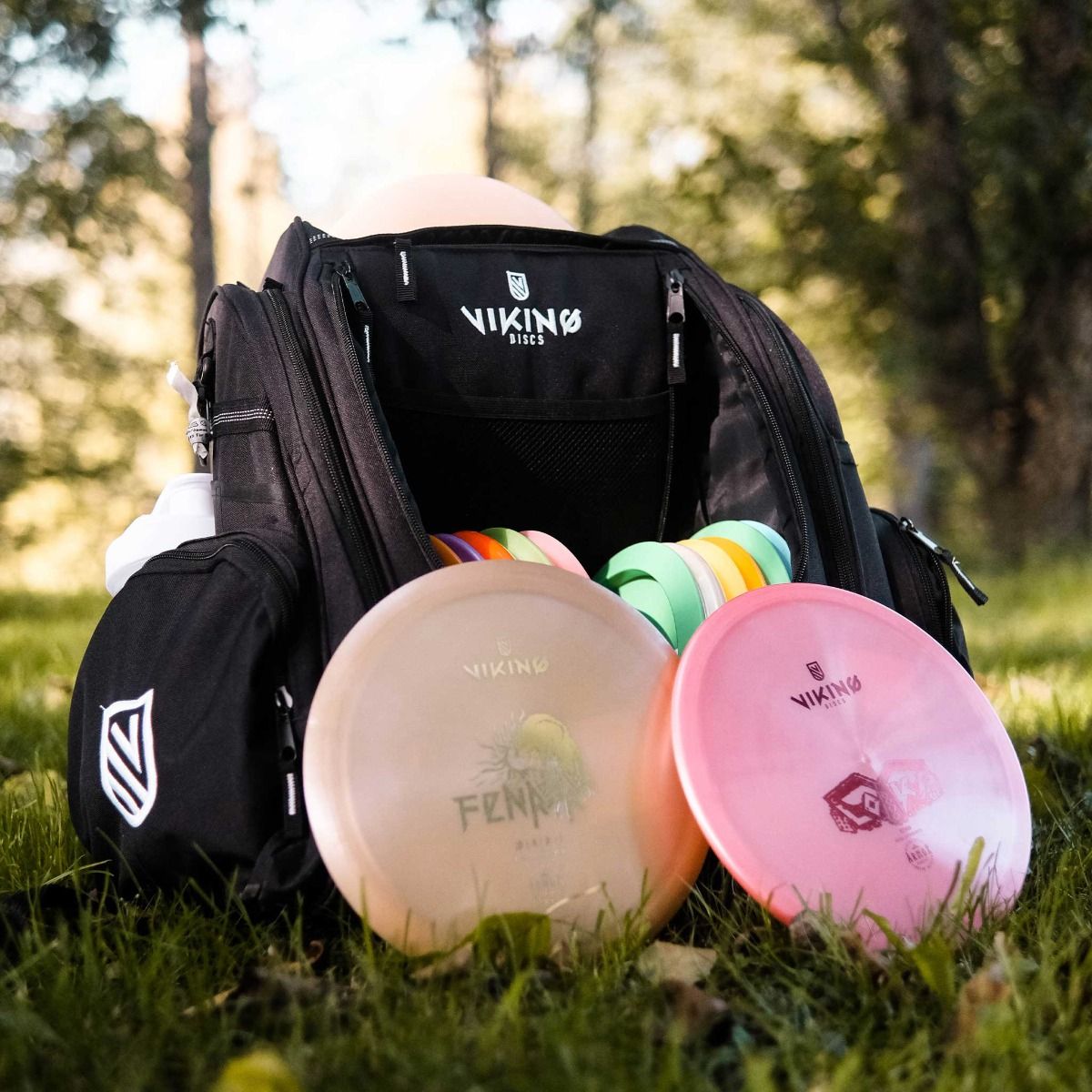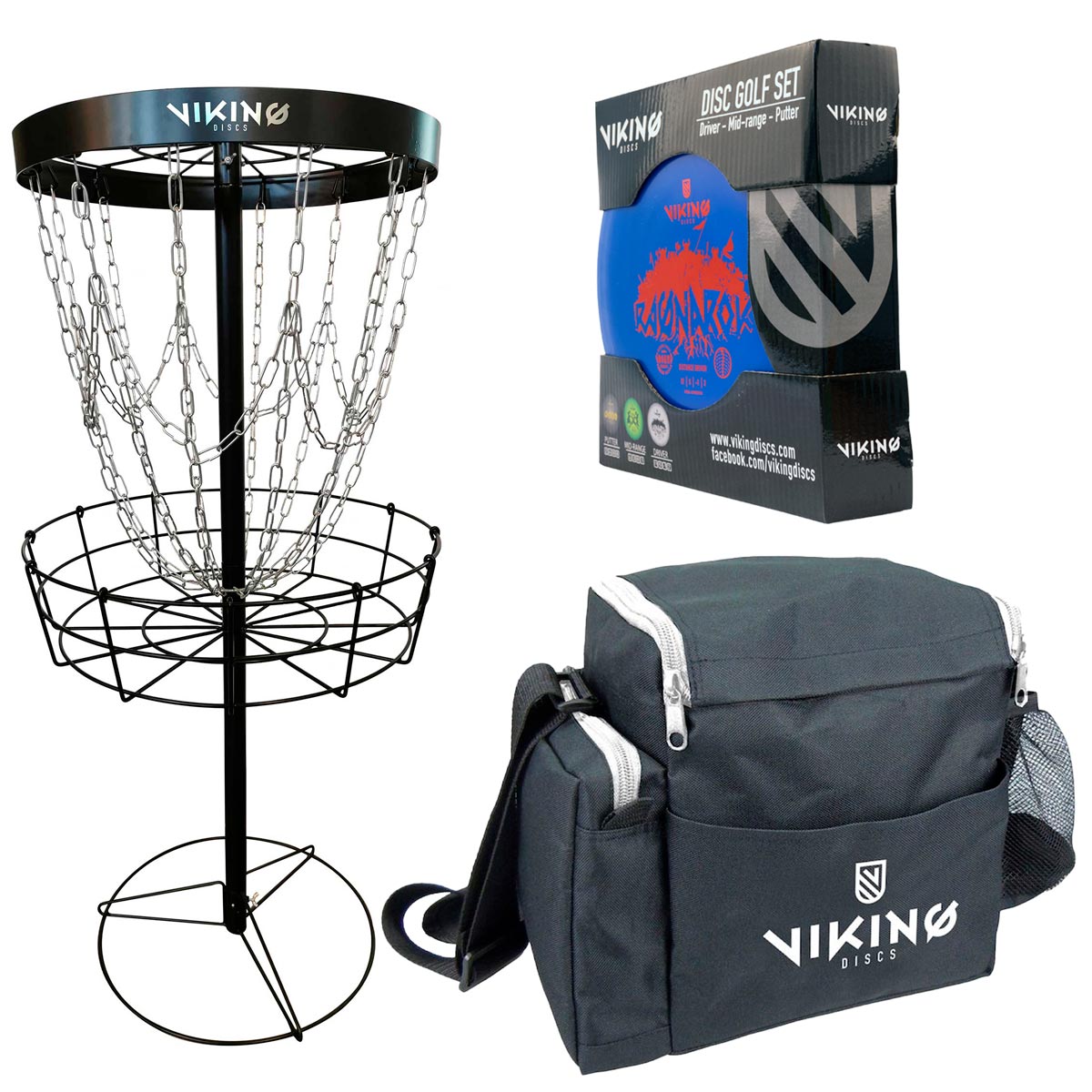What are Viking Discs?
Viking discs, also known as quoits or ring quoits, are ancient throwing weapons or sporting implements used by the Vikings during the Viking Age (8th-11th centuries CE). These discs were typically made of iron or bronze and had a central hole for gripping. They were often decorated with intricate designs and symbols, reflecting the artistic prowess of Viking craftsmen.
Viking discs were primarily used for recreational purposes, such as target practice and competitive games. They were also employed as training tools for warriors, helping them develop their strength, accuracy, and coordination. Additionally, Viking discs have been discovered in archaeological contexts associated with rituals and ceremonies, suggesting they may have had symbolic or ceremonial significance as well.
- Robert Sapolsky Height How Tall Is The Renowned Primatologist
- Buldak Recall Important Information Updates
The use of Viking discs declined after the Viking Age, but they remain an important artifact providing insights into the daily life, sporting activities, and cultural practices of the Vikings. Today, Viking discs are popular collector's items and are sometimes used in historical reenactments and sporting events.
Viking Discs
Viking discs, also known as quoits or ring quoits, were ancient throwing weapons or sporting implements used by the Vikings during the Viking Age (8th-11th centuries CE). These discs were typically made of iron or bronze and had a central hole for gripping. They were often decorated with intricate designs and symbols, reflecting the artistic prowess of Viking craftsmen.
- Throwing Weapon
- Sporting Implement
- Training Tool
- Ritual Object
- Collector's Item
- Historical Artifact
These key aspects highlight the diverse roles and significance of Viking discs in Viking society. As throwing weapons, they were used for both combat and hunting. As sporting implements, they were employed in recreational games and competitions. Their use as training tools helped Viking warriors develop essential skills. The discovery of Viking discs in ritual contexts suggests they may have also held symbolic or religious importance. Today, Viking discs are prized by collectors and are studied by historians and archaeologists, providing valuable insights into the daily life and culture of the Vikings.
1. Throwing Weapon
Viking discs were primarily used as throwing weapons, both in combat and hunting. These discs were designed to be aerodynamic and balanced for accurate and powerful throws. They were often weighted to increase their range and impact force.
- Combat
Viking discs were a formidable weapon in close-quarters combat. They could be thrown at short distances with great accuracy, making them effective against unarmored or lightly armored opponents. Viking warriors were skilled in using discs to strike vulnerable areas such as the head, neck, and joints.
- Hunting
Viking discs were also used for hunting animals, particularly birds and small game. The discs could be thrown with great force and precision, allowing hunters to take down prey from a distance. The weighted design of the discs also made them effective for stunning or killing larger animals.
- Training
In addition to their use in combat and hunting, Viking discs were also employed as training tools for warriors. Throwing discs helped to develop strength, accuracy, and coordination, which were essential skills for Viking warriors.
The use of Viking discs as throwing weapons underscores their versatility and effectiveness in Viking society. Whether used in combat, hunting, or training, these discs were a valuable tool for the Vikings.
2. Sporting Implement
Viking discs were not only used as throwing weapons but also served as sporting implements for recreational games and competitions. These discs were designed with specific features to enhance their performance in various sporting activities:
- Weight and Balance: Viking discs used for sports were carefully weighted and balanced to achieve optimal flight characteristics. This ensured accuracy, distance, and control during throws.
- Aerodynamics: The discs were often shaped to minimize air resistance and maximize their range and stability during flight. This aerodynamic design allowed players to throw the discs with greater precision and distance.
- Grip and Handling: The central hole in Viking discs provided a secure grip for players. The size and shape of the hole were designed to accommodate different hand sizes and throwing styles.
Viking disc games and competitions likely involved target practice, distance throwing, and accuracy challenges. These activities provided entertainment, fostered camaraderie, and helped develop skills that were valuable in hunting and combat.
In addition to their recreational value, Viking discs also served as training tools for warriors. By participating in disc games and competitions, Viking warriors could improve their throwing skills, coordination, and overall physical fitness.
The use of Viking discs as sporting implements highlights their versatility and importance in Viking society. These discs were not only essential for combat and hunting but also played a significant role in recreation and physical training.
3. Training Tool
Viking discs were not only used as weapons and sporting implements but also served as valuable training tools for Viking warriors. By engaging in disc-based training exercises, Viking warriors could develop essential skills and enhance their combat prowess.
- Strength and Accuracy
Throwing Viking discs required significant strength and accuracy. Warriors would practice throwing discs at various distances and targets to improve their aim and power. This training helped them develop the strength and precision necessary to wield other weapons effectively, such as spears, axes, and swords.
- Coordination and Agility
Throwing Viking discs also required good coordination and agility. Warriors had to be able to coordinate their movements and adjust their throws based on the distance and position of the target. This training helped them develop the coordination and agility needed for combat maneuvers, such as dodging attacks and quickly changing positions.
- Endurance and Stamina
Training with Viking discs could also help warriors develop endurance and stamina. Throwing discs repeatedly required sustained effort and physical exertion. This training helped them build the endurance and stamina necessary for long battles and arduous campaigns.
- Mental Focus and Concentration
In addition to physical skills, training with Viking discs also helped warriors develop mental focus and concentration. Warriors had to focus their minds and concentrate on hitting their targets accurately. This training helped them develop the mental toughness and concentration needed to succeed in the chaos andof battle.
Overall, the use of Viking discs as training tools played a significant role in the development of skilled and formidable Viking warriors. By incorporating disc-based exercises into their training regimen, Viking warriors could enhance their strength, accuracy, coordination, agility, endurance, stamina, mental focus, and concentration, all of which were essential qualities for success in combat.
4. Ritual Object
Viking discs have also been found in archaeological contexts associated with rituals and ceremonies, suggesting they may have had symbolic or ceremonial significance as well. While the exact nature of these rituals is not fully understood, several theories and interpretations have been proposed:
- Religious Symbolism
Viking discs may have been imbued with religious symbolism and used in rituals related to Norse mythology and. The intricate designs and symbols often found on Viking discs could represent deities, mythological creatures, or other elements of the Norse worldview.
- Votive Offerings
Viking discs may have been offered as votive offerings to the gods or other supernatural beings. These offerings could have been made to seek favor, protection, or to express gratitude. The discovery of Viking discs in graves and other ritual contexts supports this interpretation.
- Burial Rituals
Viking discs have been found in association with burials, suggesting they may have played a role in funeral rituals. These discs may have been placed in graves as offerings to the deceased or as symbols of the individual's status or achievements.
- Good Luck Charms
Viking discs may have been worn or carried as good luck charms or amulets. The intricate designs and symbols on the discs may have been believed to possess protective or magical powers, offering the wearer protection from harm or misfortune.
While the specific meanings and uses of Viking discs in rituals may never be fully known, their presence in these contexts suggests that they held significant symbolic and ceremonial value in Viking society. These discs provide valuable insights into the spiritual beliefs and practices of the Vikings.
5. Collector's Item
Viking discs have become popular collector's items due to their historical significance, artistic value, and rarity. Collectors are drawn to these discs for various reasons:
- Historical Significance: Viking discs are tangible artifacts that provide a glimpse into the daily life and culture of the Vikings. They offer valuable insights into the craftsmanship, sporting activities, and ritual practices of this ancient civilization.
- Artistic Value: Viking discs are often adorned with intricate designs and symbols, showcasing the artistic skills of Viking craftsmen. These designs can range from simple geometric patterns to elaborate depictions of mythological creatures and scenes.
- Rarity: Viking discs are relatively rare artifacts, especially those in good condition. Their scarcity makes them highly sought after by collectors who appreciate their historical and artistic value.
Collecting Viking discs not only allows individuals to own a piece of history but also contributes to the preservation of these artifacts. Private collections often house rare and unique specimens that may not be accessible in museums or public institutions. By preserving these discs, collectors play a role in safeguarding the cultural heritage of the Vikings for future generations.
The market for Viking discs varies depending on factors such as age, condition, rarity, and provenance. Some discs can fetch high prices at auctions and specialized dealers. However, it is important for collectors to exercise due diligence and purchase from reputable sources to ensure the authenticity and value of their acquisitions.
6. Historical Artifact
Viking discs, as historical artifacts, offer valuable insights into the daily life, culture, and craftsmanship of the Vikings. These discs provide tangible evidence of Viking sporting activities, combat practices, and ritual beliefs. Their discovery in archaeological contexts, such as burials, settlements, and ritual sites, helps historians reconstruct the past and gain a deeper understanding of Viking society.
The historical significance of Viking discs extends beyond their individual existence. They contribute to a broader understanding of Viking culture and history. By studying these discs, researchers can gain insights into the technological advancements, artistic styles, and social practices of the Vikings. Moreover, Viking discs can shed light on trade networks, cultural exchanges, and the interactions between the Vikings and other civilizations.
Preserving and studying Viking discs as historical artifacts is crucial for several reasons. First, they provide irreplaceable primary source material for historians and archaeologists. Second, they help preserve the cultural heritage of the Vikings and connect us to our past. Third, they can contribute to educational programs and public engagement initiatives, fostering a greater appreciation for history and archaeology.
Frequently Asked Questions about Viking Discs
This section addresses some common questions and misconceptions surrounding Viking discs, providing concise and informative answers.
Question 1: What were Viking discs used for?
Viking discs served multiple purposes, including as throwing weapons, sporting implements, training tools, and ritual objects. They were used in combat, hunting, games, competitions, and potentially had symbolic or ceremonial significance.
Question 2: What materials were Viking discs made of?
Viking discs were primarily made of iron or bronze. Iron discs were more common and used for various purposes, while bronze discs were often more elaborately decorated and may have been used for ceremonial or ritualistic reasons.
Question 3: How were Viking discs used in combat?
Viking discs were effective throwing weapons used in close-quarters combat and hunting. They were designed to be aerodynamic and balanced for accuracy and power, allowing warriors to strike vulnerable areas with precision.
Question 4: What role did Viking discs play in Viking culture?
Viking discs were more than just weapons or sporting equipment; they held cultural significance. They were used in training exercises to enhance warriors' skills, and their intricate designs and symbols may have represented Norse mythology or beliefs.
Question 5: Are Viking discs still used today?
While Viking discs are no longer used in combat or hunting, they remain popular collector's items and are sometimes used in historical reenactments and sporting events. They serve as valuable artifacts that provide insights into Viking craftsmanship, culture, and history.
In conclusion, Viking discs were versatile tools with diverse applications in Viking society. They played a practical role in combat, hunting, and training, while also holding cultural and symbolic significance. Studying and preserving these artifacts helps us better understand the daily life, skills, and beliefs of the Vikings.
Transition to the next article section:
Conclusion
Viking discs, as explored in this article, were multifunctional artifacts that played significant roles in Viking society. They served as throwing weapons, sporting implements, training tools, and ritual objects, providing insights into the Vikings' daily life, culture, and craftsmanship. The intricate designs and symbols adorned on these discs offer glimpses into the artistic prowess and belief systems of the Vikings.
Preserving and studying Viking discs is of great importance for understanding the past and appreciating the cultural heritage of the Vikings. These artifacts serve as tangible links to a bygone era, enriching our knowledge of Viking history, technology, and social practices. Furthermore, they inspire contemporary art, design, and historical reenactments, ensuring that the legacy of Viking discs continues to captivate and inform future generations.



Detail Author:
- Name : Mr. Liam Nienow
- Username : russ07
- Email : goldner.jacky@hotmail.com
- Birthdate : 1999-07-26
- Address : 10947 Dimitri Pike Apt. 761 West Maximilian, NM 66702-9716
- Phone : +1.385.564.1618
- Company : Block, Koss and Hoppe
- Job : Railroad Inspector
- Bio : Illo neque ullam tempore officia ea porro. Eos sed aut nihil quo consequatur. Ullam expedita sit est et.
Socials
tiktok:
- url : https://tiktok.com/@fisherj
- username : fisherj
- bio : Ab similique harum facilis vero libero repellendus.
- followers : 3593
- following : 1024
facebook:
- url : https://facebook.com/juston_xx
- username : juston_xx
- bio : Et itaque excepturi magni aperiam odio. Provident aut quaerat et voluptatem.
- followers : 5430
- following : 545